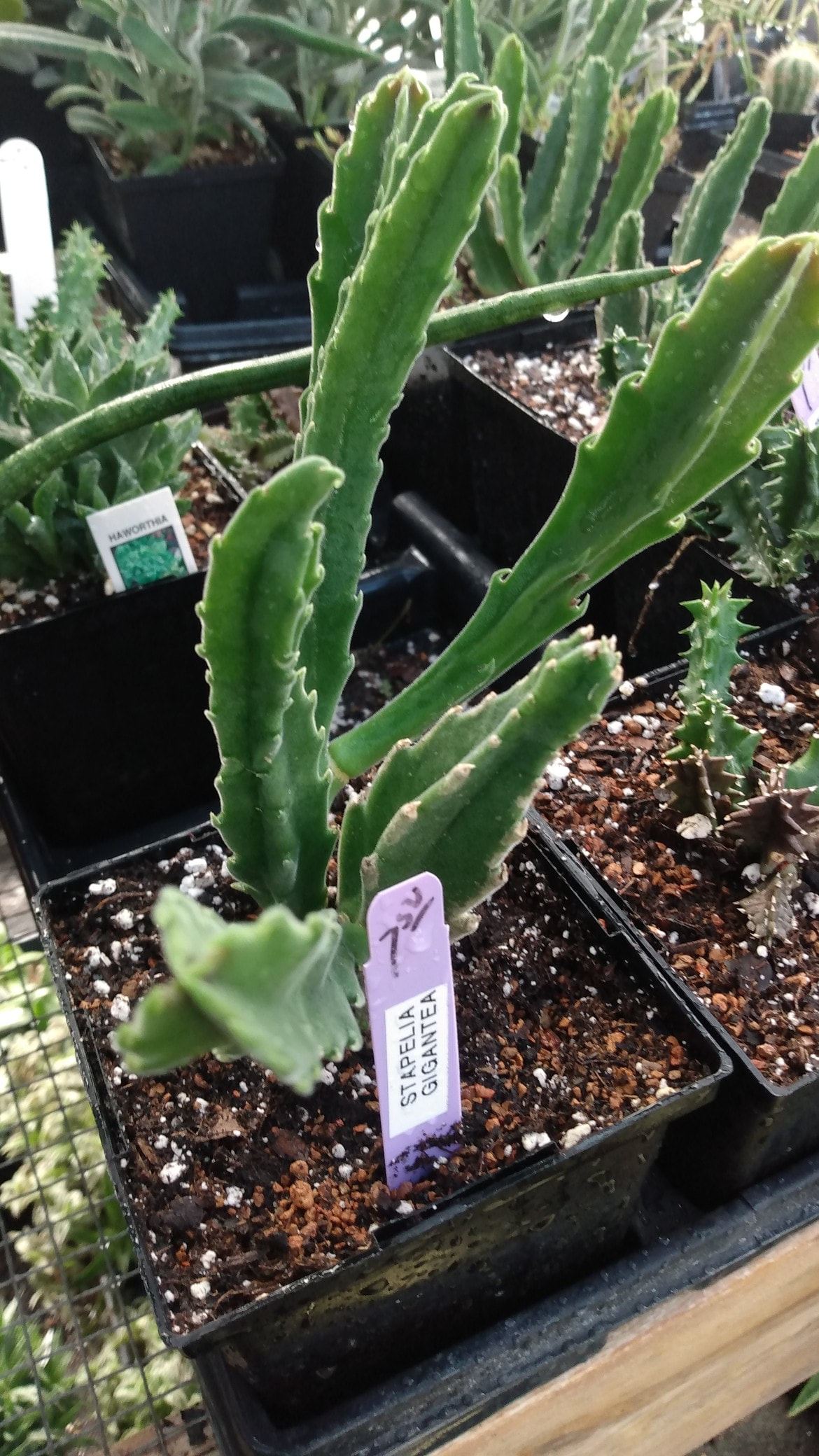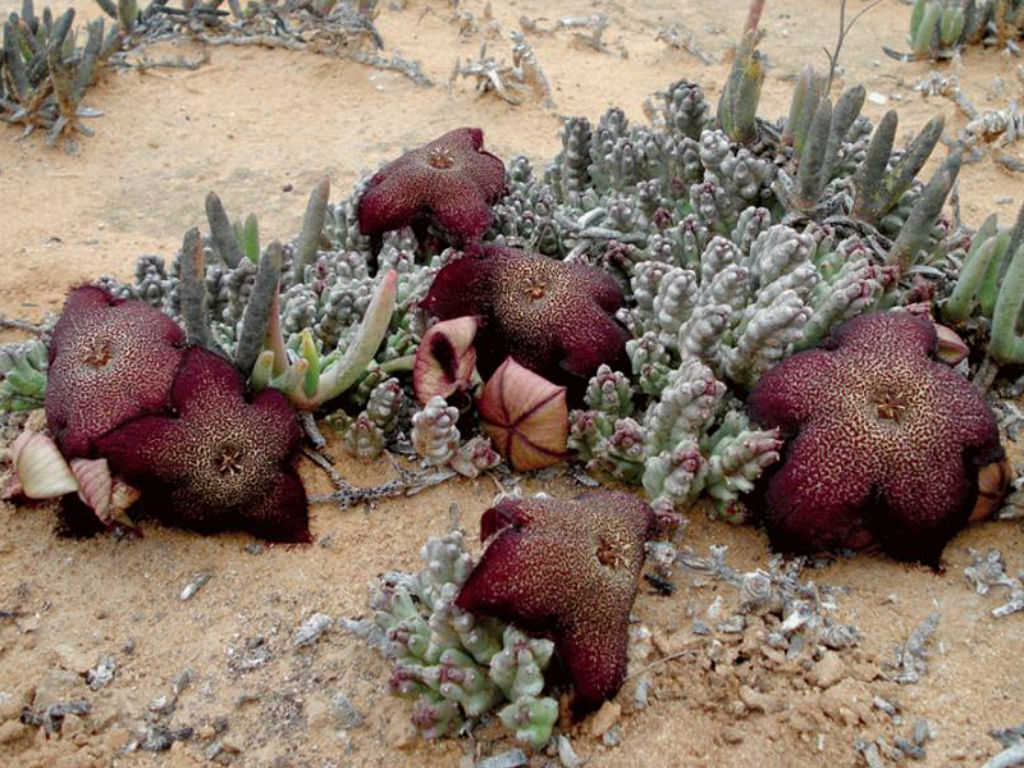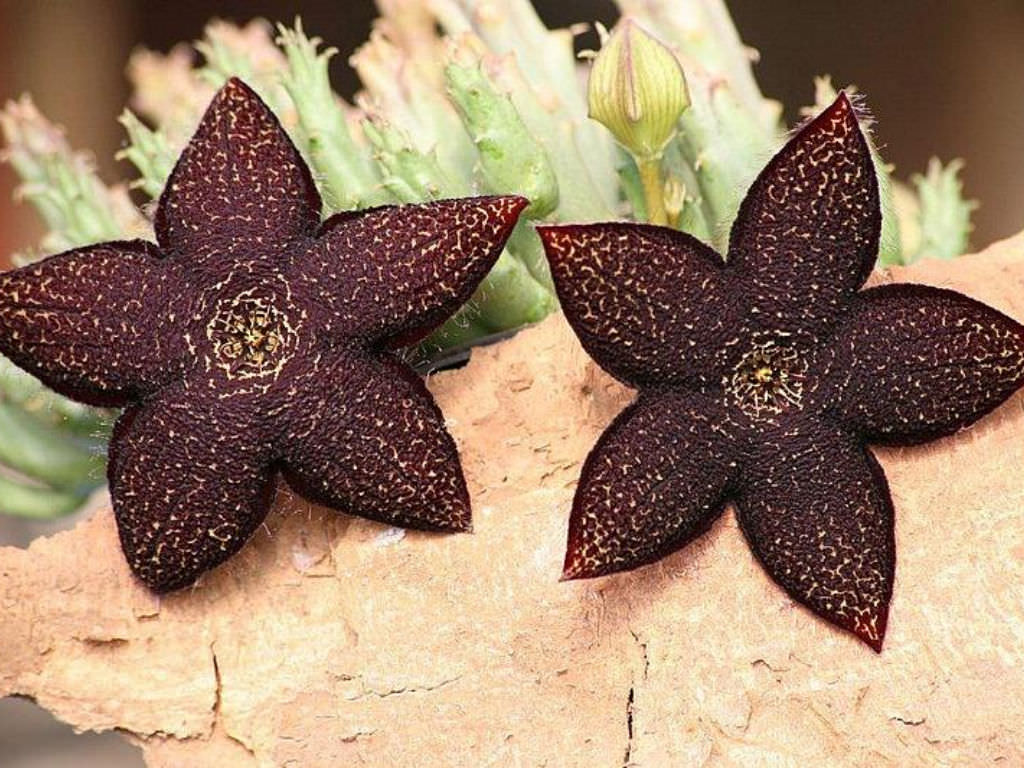
These are commonly used as a groundcover in arid regions. Cannot withstand temperatures below 20 degrees Fahrenheit. These are very easy to propagate by stem or root cuttings, especially since the stolons are so common. Individual flowers last up to 2 days, but flowers produced in succession may continue for up to 2 months. Leaf size: very small, light-green to yellowįlower structure: 30-45 centimeters across, star-shaped, pale-yellow with crimson stripes and center, crimson-purple hairs on the undrsides, wreaks similar to carcases, pollinated by fliesįlowering frequency: Flowers in September and October. The top of the stems look x-shaped with flat, thick portions at every side. Shipping: All orders will be posted with registered airmail All the orders are processed in. Leaf shape: The leaves are hook-shaped spines and are placed on each of the four “flanks” on the stems. common names: Starfish cactus, Carrion cactus, Toad cactus. Reproduction by offsets: primarily through stolons Watering requirement: low, only requires watering once the soil is entirely dry, enjoyes frequent watering during warmer times Soil requirements: requires good drainage, keep soil mostly dryĪir requirements: not sufficiently researched Problems (minor): The flowers emit the unpleasant odor of rotting meat.

Root System: Spreads frequently through stolons (similar to strawberries). Clumps range anywhere from 1.0-2.2 meters (3-7 feet) in diameter. Stapelia gigantea (Carrion flower, Starfish cactus, Zulu giant)ĭiameter: Stems are up to 3 centimeters across. This cactus has generally facile roots and a body stem that just looks like peanuts. The succulent flowers themselves may look decent, however, it doesn’t smell such lovely. Many species of Stapelia are known for having flowers that smell like rotting meat giving them the common name carrion flower. Carrion Cactus (Stapelia grandiflora) Also called a starfish blossom, this is a cactus that has enormous five-point sprouts. Each winter, carrion flower blooms with starfish-shaped flowers that can be ten inches across. The plant has squared-off, spineless stems that grow to form a clump. It is in the Dogbane Family (Apocynaceae) which is the same plant family as milkweeds. For the gardener who wants to try growing something unusual, carrion flower (Stapelia gigantea) is a cactus-like succulent that certainly fits the bill. Stapelias are low, perennial succulents that come in red, green, or purple colors. Is Stapelia cactus or succulent Stapelia is a genus of perennial succulent plants from South Africa.

The flowers it produces in autumn are large, pale-yellow, and smell of rotting meat (which is useful in attracting its primary pollinators, flies). Carrion Cactus, Carrion Flower, Starfish Cactus, Star Flower, Starfish Plant, Toad Cactus, Toad Plant. The Stapelia Grandiflora is a succulent plant found within the genus Stapelia, also known as Starfish cacti or carrion flower.

#CARRION CACTUS FULL#
Once hardened off however they can be grown in full sun and are even considered invasive in parts of Africa.Native to South Africa, this low-dwelling cactus spreads frequently through stolons. Stapelias like part shade so a bright light or covered lenai is perfect, they are also very drought tolerant and will let you know when they are thirsty by the softness of their stems and a slight droop. It readily forms clumps and blooms spring through fall but it really gets rocking in summer where each new growth will bear one of its large flowers that are sure to impress. This is how stapelia evolved to bring its native pollinators, flies! While not strong to you or I flies go crazy for it but kept indoors they’ll never be given the chance to. ground squirrels, prairie dogs, lagomorphs and insects also small birds, reptiles, carrion, wild cactus fruits and crops, e.g. When you lean in to smell however, you’ll also be surprised to find a scent of rotting meat. Bearing gorgeous eye catching red-yellow striped flowers with white fringe, you’ll get lost in the pattern of the flower. It has many common names, including starfish plant, starfish cactus, carrion cactus, carrion flower, toad cactus, toad plant. Love stinks, or at least it does when stapelia gigantea blooms. Stapelia Gigantea, Cacti & Succulents, Apocynaceae, 4in Potted Plant


 0 kommentar(er)
0 kommentar(er)
